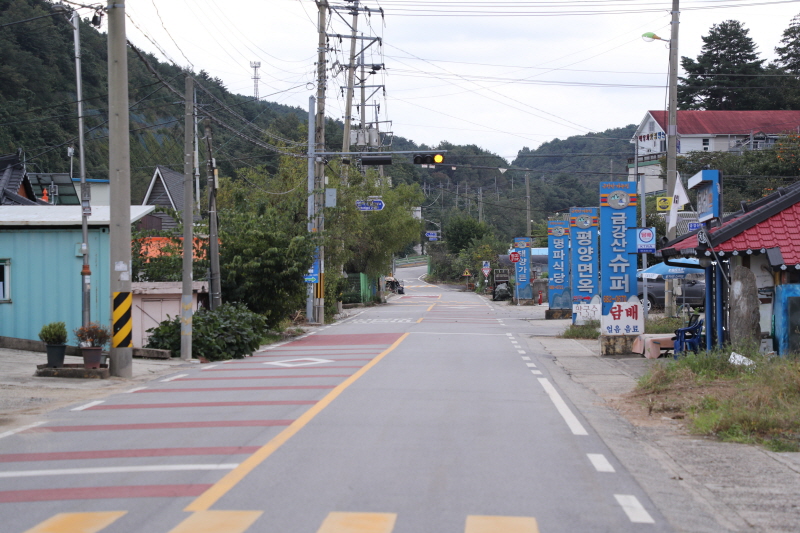North Korea’s declaration on October 9 to completely seal and block its southern border through fortifications along the Military Demarcation Line (MDL) appears aimed at demonstrating a strong intention to sever ties with South Korea.
However, this move also reflects Pyongyang’s complex strategic calculations. While it avoided escalating tensions at the Northern Limit Line (NLL) in the West Sea—an area that could provoke direct clashes with the South—it left open the possibility of dialogue, seemingly mindful of the upcoming U.S. presidential election.
The North Korean People’s Army General Staff announced this in a report published by state media outlet, KCNA. The statement emphasized that the “military step aims to completely separate its territory from the territory of South Korea,” underscoring the message as directed at both the U.S. and South Korea.

Interestingly, a separate report detailing the results of the Supreme People’s Assembly meeting, which Kim Jong-un did not attend, was published in the Rodong Sinmun, a newspaper read by North Korean citizens.
Notably, the General Staff mentioned that the North had sent a notification to U.S. forces at 9:45 a.m. on October to “prevent any misjudgment and accidental conflict.”
This unprecedented disclosure of the specific time of the message was confirmed by the UN Command, which stated that it received the message through the hotline, while declining to reveal further details to maintain the integrity of the channel.
Despite the severance of inter-Korean communication lines last year, the so-called “pink phone” hotline between the UN Command and North Korea has remained active behind the scenes. The disclosure suggests Pyongyang is deliberately ignoring South Korea, while signaling a different approach to the U.S.
Experts believe this tactic is designed with the tight race in the upcoming U.S. presidential election in mind, leaving room for a potential shift in North Korea’s stance depending on the policies of the new administration. During a speech on October 7, Kim Jong-un stressed the importance of closely monitoring the volatile situation around North Korea.
The General Staff also emphasized that the measures are defensive in nature, aimed at “deterring war and safeguarding the republic’s security.” While the intention to physically demonstrate the severance of ties with South Korea is clear, the defensive rationale behind the military fortifications suggests a dual-purpose strategy.

Kim Jong-un has repeatedly stated, most recently on October 7, that North Korea has no intention of attacking South Korea or pursuing unification by force. This seemingly contradictory stance aligns with North Korea’s recent provision of millions of artillery shells, including 122mm and 152mm shells, to Russia.
Experts suggest that North Korea’s list of export items to Russia may also include short-range missiles and 240mm long-range artillery, which are critical in conventional warfare.
This large-scale arms export is being interpreted as a sign that North Korea does not foresee a full-scale conflict with South Korea. The construction of anti-tank barriers and the planting of landmines along the approximately 238 km (about 148 miles) MDL could reflect Pyongyang’s concerns over vulnerabilities in its defensive capabilities.
The focus on fortifying the MDL, rather than the NLL, further supports this interpretation. Although the NLL functions as the de facto maritime border between the two Koreas, North Korea has consistently rejected its legitimacy.
In February, Kim Jong-un dismissed the NLL as a “ghost line” and stated that no boundary could be recognized. While many anticipated North Korea to declare a new maritime boundary during the recent Supreme People’s Assembly, the emphasis instead remained on land-based fortifications.
Professor Park Won-gon of Ewha Womans University noted that establishing a new maritime boundary would inevitably lead to the violation of the NLL, raising the risk of military conflict with South Korea, which Pyongyang is keen to avoid.
The defensive justification put forward by North Korea for its border fortifications allows it to maintain the option of provocation against South Korea if necessary. Some military sources believe that South Korea’s frequent references to the “end of the regime,” a term previously considered taboo within the government, reflects how deeply this notion has taken root among the North Korean leadership.
Kim Jong-un had previously lashed out at President Yoon Suk-yeol’s remarks about the potential end of the North Korean regime during a speech on Armed Forces Day.
By emphasizing the defensive nature of its actions along the MDL, North Korea may be attempting to shift the blame for any future escalation onto South Korea, according to Professor Park. He also warned that North Korea’s provocations could aim to exploit any rifts between South Korea and the U.S.
BY YEONGGYO CHUNG, YUJUNG LEE, KEUNPYUNG LEE [chung.yeonggyo@joongang.co.kr]

![Christian Faith Labeled Treason in North Korea, Believers Sent to Camps A North Korean flag flutters at the propaganda village of Gijungdong in North Korea, in this picture taken near the truce village of Panmunjom inside the demilitarized zone (DMZ) in South Korea on July 19, 2022. [REUTERS]](https://www.koreadailyus.com/wp-content/uploads/2025/09/0915-NorthKoreanflag-100x70.jpg)


